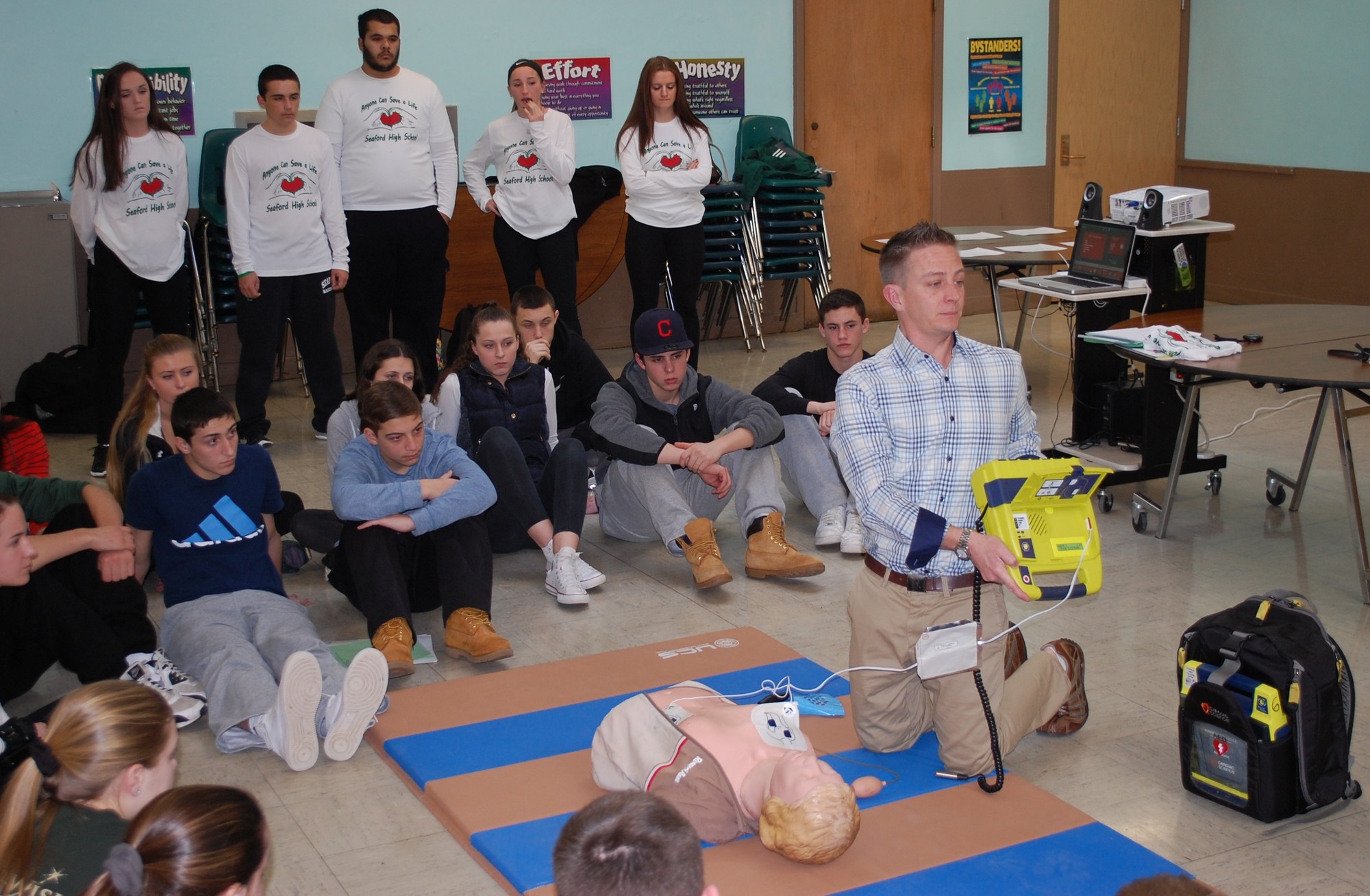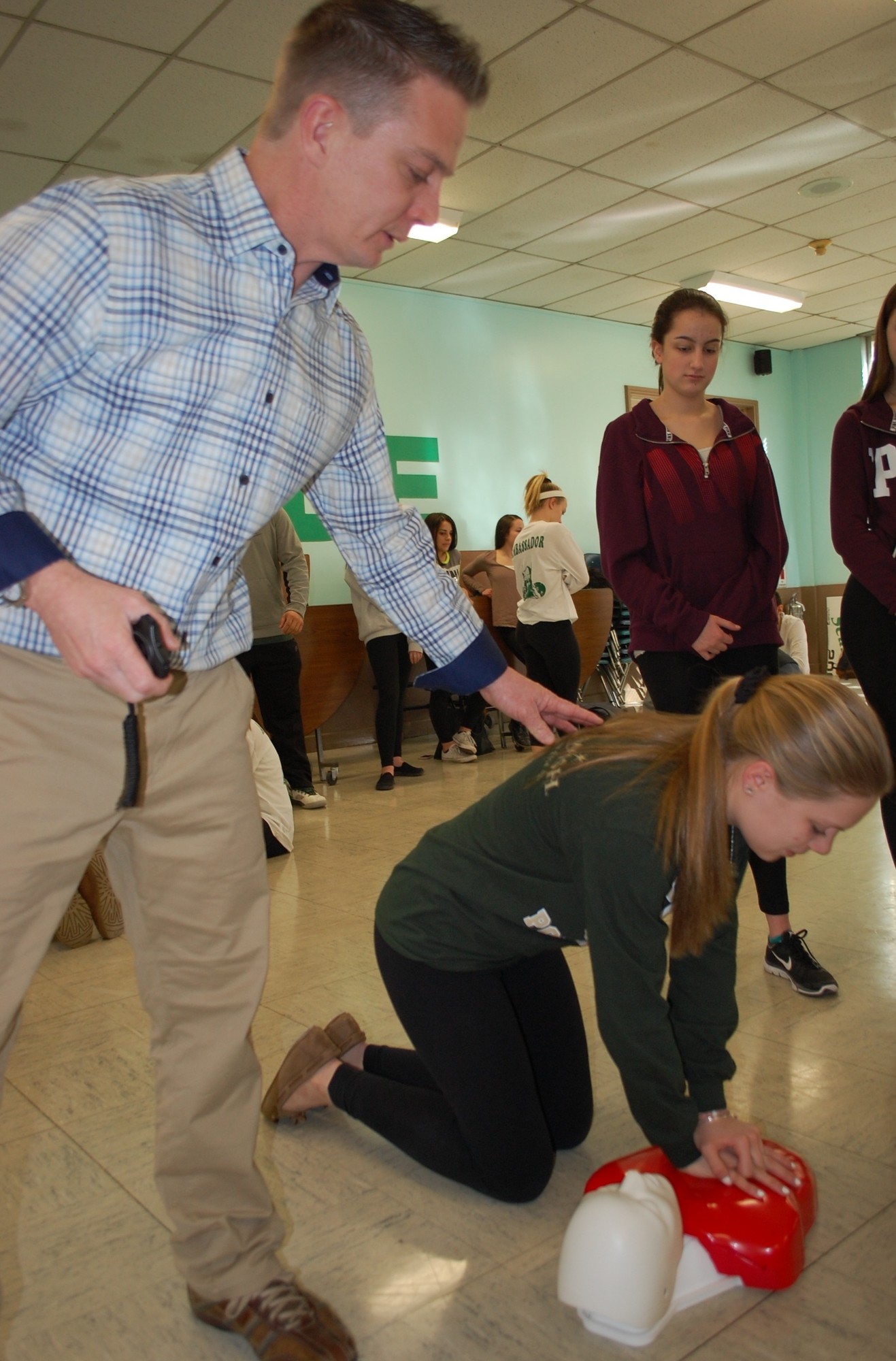Seaford athletes can save lives
If a medical emergency ever happened during Seaford High School sports game, the person in distress would have a good chance of survival. That’s because dozens of Seaford athletes have been trained in CPR and in the use of automated external defibrillators.
On March 3, 60 athletes representing just about every team Seaford offers gathered in the cafeteria after school to learn how to be life savers. They worked with 22 other athletes who were trained last year, and this time were serving as ambassadors.
The training was led by phys. ed. teacher and district athletic trainer Michael Spreckels. Dummies were set up throughout the room, and each group of four to six students took turns practicing chest compressions. They were assisted by the two ambassadors assigned to each group.
All the ambassadors could be identified by their white T-shirts that read “Anyone can save a life.”
“I feel that it’s important that most students know how to do it, not just the coach,” said junior lacrosse player Joshua Pinnock, one of the ambassadors, on the importance of knowing life-saving skills. He added that the school’s athletes continually pass on their knowledge to younger students, so Seaford athletic fields will always be well-stocked with people who can help in case of an emergency.
Senior lacrosse player Molly Van Dusen agreed, adding, “It’s really important that everyone in this school and everyone in general know what to do in a situation like this.”
Spreckels said that each athletic team should have certain students assigned to specific duties in case of an emergency. There should be people who are responsible for calling the Fire Department, which would send an ambulance to the scene, others who could perform CPR, and a third group that would be responsible for getting and using the AED.
He said that when someone suffers from sudden cardiac arrest, their chance of survival decreases by 10 percent with each minute that passes that they don’t get treatment. Brain damage can start to occur, he explained, in as little as four minutes.
“Time is of the essence,” Spreckels said. “That’s the most important part.”
Students took the lesson seriously, realizing they can play an important role in the event of an emergency.
“It’s a good thing to learn because you can save someone’s life and we’re all ready to do this,” said junior Kevin Murphy, who was one of the 60 students trained. He plays lacrosse and football.
“It’s smart to learn early,” added sophomore John Leonardi, a football and baseball player. “You know when something’s happening to make the quick decisions to save a life.”
Athletic Director Tom Condon said that he would be conducting “Drop your Dummy Drills” throughout practices for the spring sports teams. A dummy would be dropped on the field, and the students from each team that have been trained would have to go through the life-saving techniques they learned on March 3. Each “drop” would be videotaped so the students’ response could be evaluated. “You can always get better,” Condon said. “We’re going to find out through our drills how good we are.”
Each coach has a backpack filled with medical supplies and a portable AED that they take with them to each game and practice. Condon stressed the importance of having numerous people willing and able to use the equipment in a life-or-death situation.
“If indeed it ever happened when they were there, they know how to take charge,” he said of Seaford’s athletes. “We intend to make this an integral part of our athletic program.”











